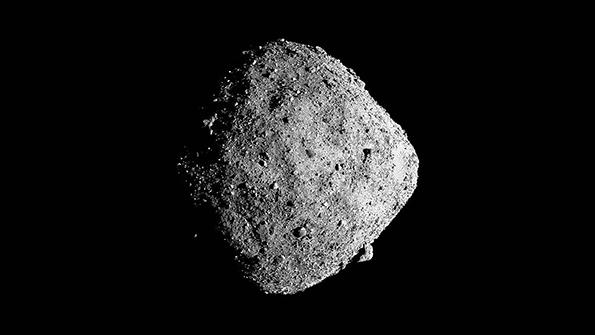
Ask the Editors: The Aviation Week Network invites our readers to submit questions to our editors and analysts. We’ll answer them, and if we can’t we’ll reach out to our wide network of experts for advice.
NASA’s Osiris-Rex will be lightly impacting Bennu, which has a 1 in 2,700 chance of impacting Earth in 175 years. Is NASA ensuring that the forces from Osiris-Rex will not make a Bennu impact with Earth more likely in the future, or are those forces so minimal that they will have no appreciable effect?
Aviation Week Space Reporter Mark Carreau answers:
Bennu, all 85.5 million tons of the very rocky but very low-density planetary body, has been through a lot over its estimated 4.5-billion year lifetime. Now a “rubble pile” of boulders lashed together by gravity and slightly taller than the Empire State Building (about 500 m, or 1,640 ft.), Bennu is believed to be a descendant of a Connecticut-size asteroid that was shattered by an impact with another planetary object between 700 million-2 billion years ago.
When the large van-size spacecraft descends Oct. 20 to collect a sample of Bennu’s surface material, a gentle encounter is to last less than 16 sec.—and potentially only 5 sec.—and feature a burst of nitrogen from an 11-ft.-long robot arm called the Touch-and-Go Sample Acquisition Mechanism (Tagsam) to direct several ounces of pebbles and dust into a collection container. Hardly an impact.
After forming in the asteroid belt between Mars and Jupiter, Bennu has drifted closer to the Earth. Considered a near-Earth asteroid, Bennu orbits the Sun every 1.2 years and makes its closest approach to the Earth every six years. Prior to the Oct. 20 encounter, experts estimate, Bennu has a 1 in 2,700 chance of impacting the Earth between 2175 and 2195.
Prior to Osiris-Rex’s arrival at Bennu, astronomers noted a slight drift by Bennu toward the Sun, about 0.18 mi. per year, possibly due to the Yarkovsky effect, a process by which heat from the Sun warms Bennu due to its dark mineral composition. As it rotates once every 4.3 hr. in the opposite direction of its orbit and away from the Sun, the heat is radiated away as a slight propulsive force.
Thanks to close-up observations of Bennu since the spacecraft’s arrival in December 2018, the planetary defense community can use their assessment of Yarkovsky to improve estimates of the impact threat posed by other asteroids and perhaps even how to use the effect as part of a defense strategy.





